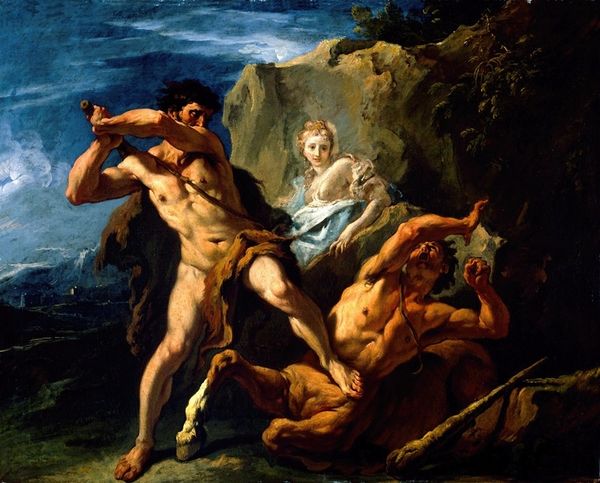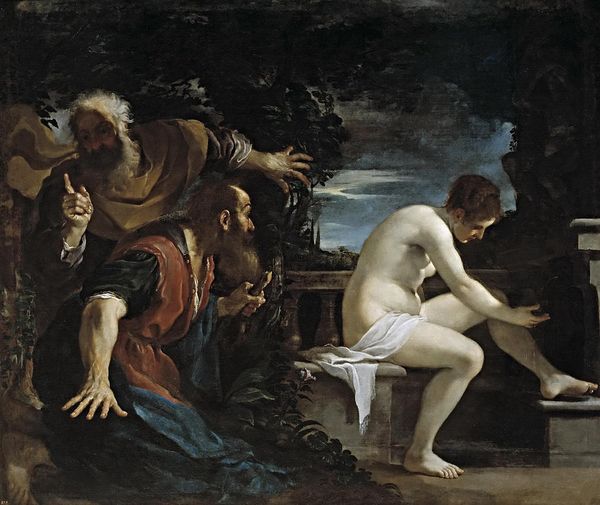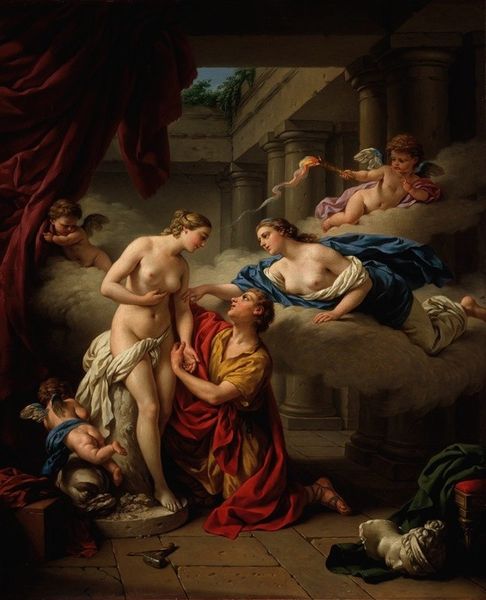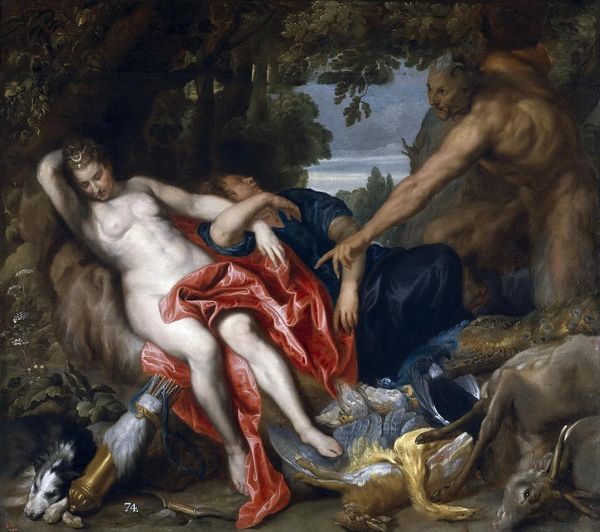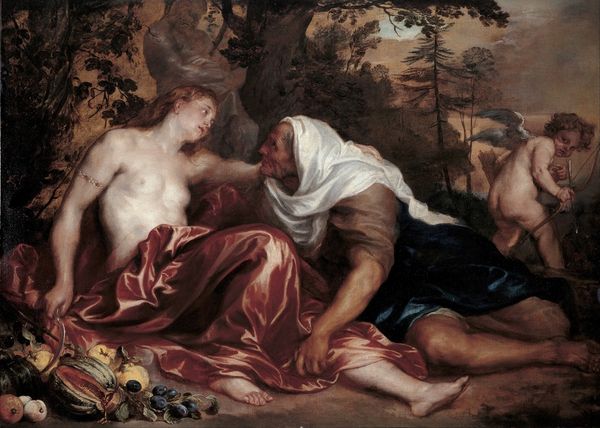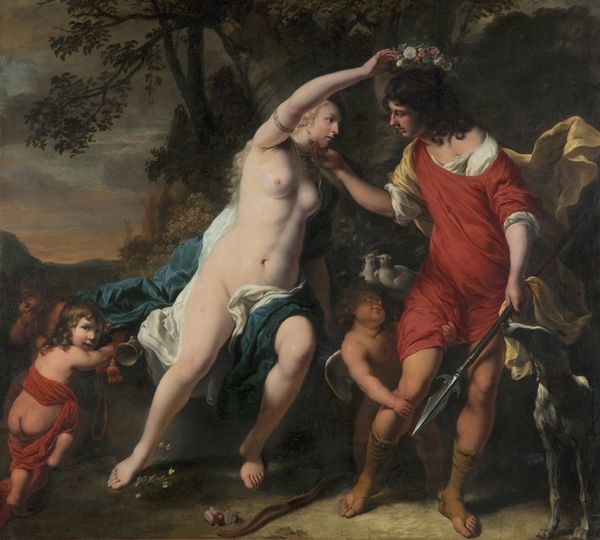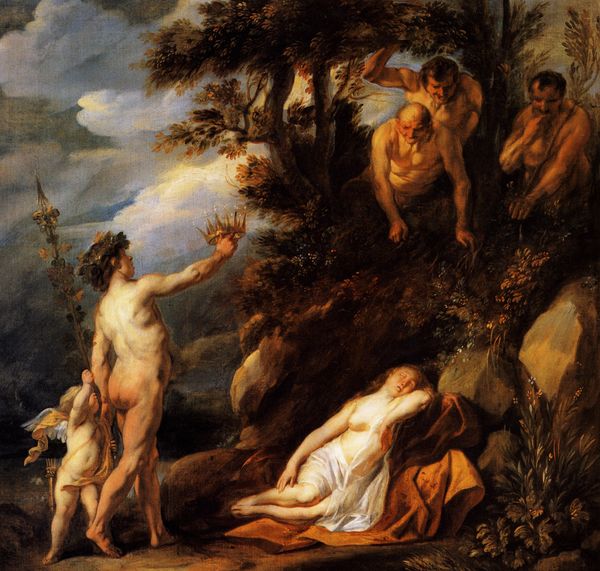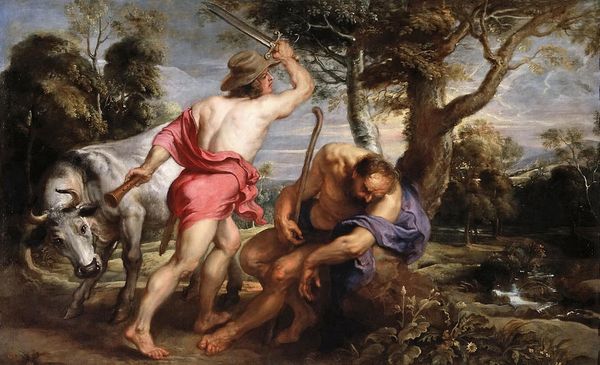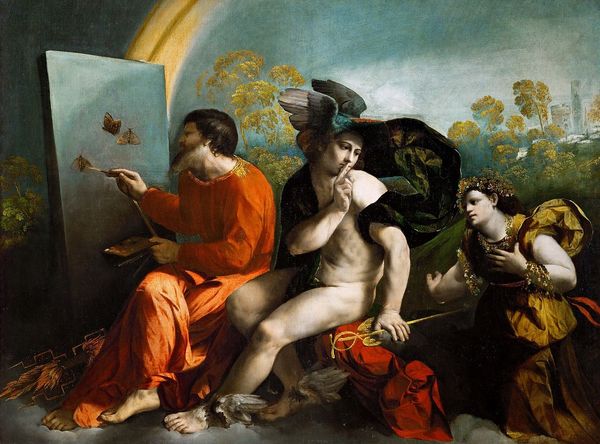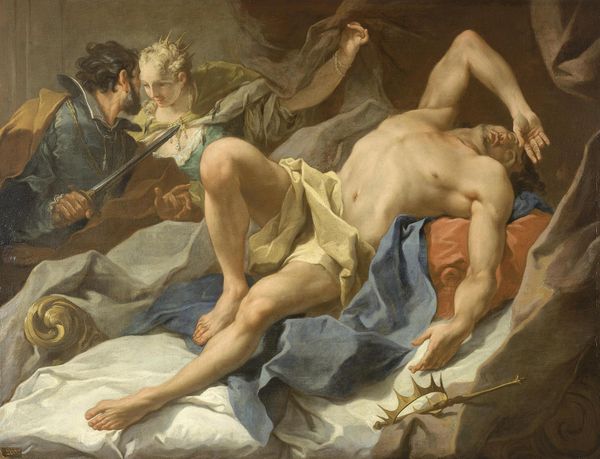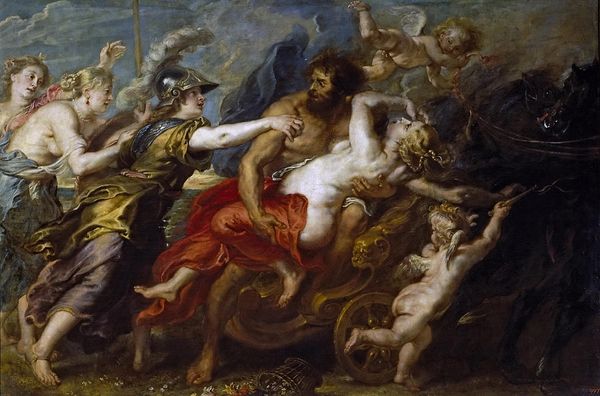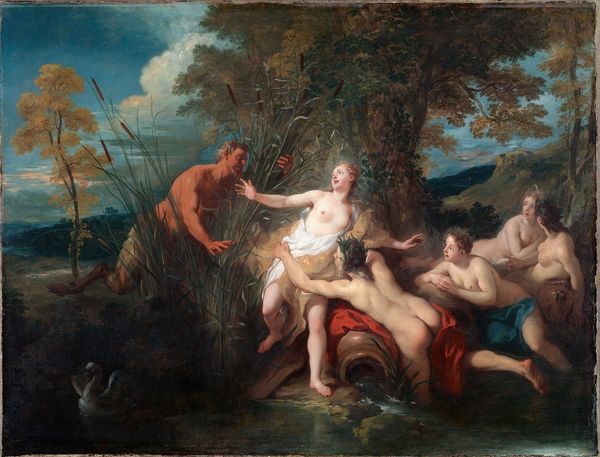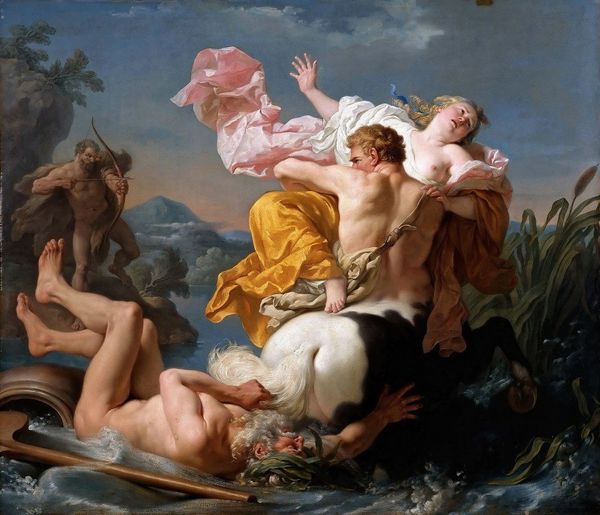
oil-paint
#
allegory
#
baroque
#
fantasy art
#
oil-paint
#
figuration
#
oil painting
#
mythology
#
history-painting
Copyright: Public Domain: Artvee
Curator: Abraham Bloemaert’s "Mercury, Argus and Io," from around 1592, crafted with oil paint, presents a dense mythological scene. The muscular figures are striking, but I'm left wondering about the material conditions surrounding its creation. What do you make of the contrast between the idealised bodies and the earthy setting? Editor: I notice that too – it feels kind of odd, like this super polished myth dropped into a rough forest. How would understanding Bloemaert's studio practice or the patronage system of the time influence how we view this artwork? Curator: Exactly. Considering the pigment sources – where did Bloemaert source his blues, yellows, and reds? What was the labour involved in grinding and mixing those colors? Even something seemingly straightforward, like the canvas preparation, involved layers of skill and material application. Editor: So, it's not just about the artistic "genius" imposing a vision, but also about the entire network of labour and resources that made it possible. I also can’t help thinking about this shepherd’s humble rod and vessel lying next to him – those appear as if crafted with love, adding value to his material presence, and a stark contrast with the protagonist’s fine attire, although they are of divine origin. Curator: Precisely. We should also ask what function paintings like these performed for Bloemaert's audience. Was this mythological scene purely ornamental, displayed as a symbol of wealth and taste, or was it traded and distributed to wider circles as cultural commodity? Was there some moral intention? These things say something about the work's purpose, the patrons' desires and how art functioned as social display. Editor: I see. Looking at it that way makes the artwork much more than just pretty colours. It becomes a document reflecting its time's economics and social dynamics of production and ownership. Thank you for helping me to see the full picture! Curator: Of course. Now you start seeing artworks everywhere as product and part of their own contemporary systems. Always think who made the artwork, how it was made, what materials and methods were used, for whom, and, more importantly, why.
Comments
No comments
Be the first to comment and join the conversation on the ultimate creative platform.

